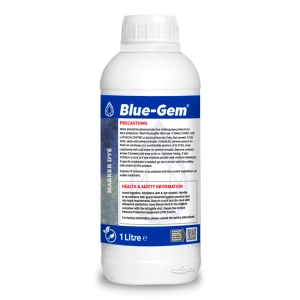Why is bindweed such a successful weed?
One of the reasons bindweed is such a successful weed is due to its ability to regrow from even the smallest scrap of root left in the ground.
If you’ve ever tried pulling out bindweed by hand, you’ll know just how difficult it is to pull without snapping those oh-so-thin stems (and therefore leaving the root firmly in place to regrow).
The long thin roots of bindweed can grow deeply and tend to move through the roots of other plants with ease. Removing the roots of bindweed manually therefore is incredibly difficult. The only way to successfully do this by hand is to dig it out.
Sadly, doing this nearly always destroys other healthy plants since it is usually impossible to disentangle the roots of bindweed from those of plants you want to keep.
Hedge or Field Bindweed?
The two main varieties of bindweed are hedge bindweed and field bindweed. Field bindweed creeps along the ground producing deep taproots and extensive rhizomes. Its leaves are rounded and flowers slightly smaller than hedge bindweed.
Hedge bindweed climbs up other plants, fences and hedges, and produces a shallower but tangly root system.
Hedge bindweed has larger leaves and flowers than field bindweed; the leaves being hairless and triangular with a point at the end. It can reproduce by seed or from rhizomes.
Most gardeners will be familiar with hedge bindweed and may have seen it twist and wrap itself around any number of tall garden plants.
It is such a robust successful weed, that if left alone, it will eventually smother the plant it is using to grow up, and take over completely – ultimately preventing light getting to the host plant and killing it.
How to get rid of bindweed
1. Use the correct product
The best way to deal with bindweed is to use a systemic weedkiller like Roundup Pro Vantage.
This particular product contains glyphosate which is the best chemical to use when it comes to killing bindweed.
2. Apply to the leaves
It should be applied to the leaves of the plant when it is actively growing. The active ingredient will travel to the roots killing the plant. Make sure you always read the manufacturer’s instructions for the correct application rates.
You will need to be careful not to get any of the weedkiller on surrounding plants. Glyphosate is a non-selective weedkiller and will kill any plants it is applied to.
3. Take care with targeting
To ensure you are very targeted in your application, try training the bindweed around canes, angling them away from your other plants. This will make application safer and avoid the risk of splashing.
You could consider using a weed wiper and blue dye indicator to make targeting just the leaves of bindweed a little easier.
Be patient and wait for the plant to completely die back before disposing of it.
You can help prevent bindweed from returning by applying a thick layer of mulch to your beds and borders. This will assist in preventing any remaining rhizome pieces from regrowing as the light will be blocked out. However, as bindweed is such a tenacious weed plant, you may find that follow up treatments are necessary.







